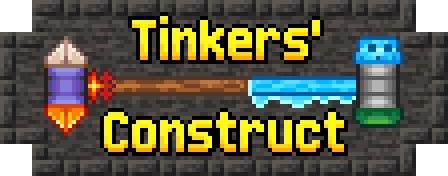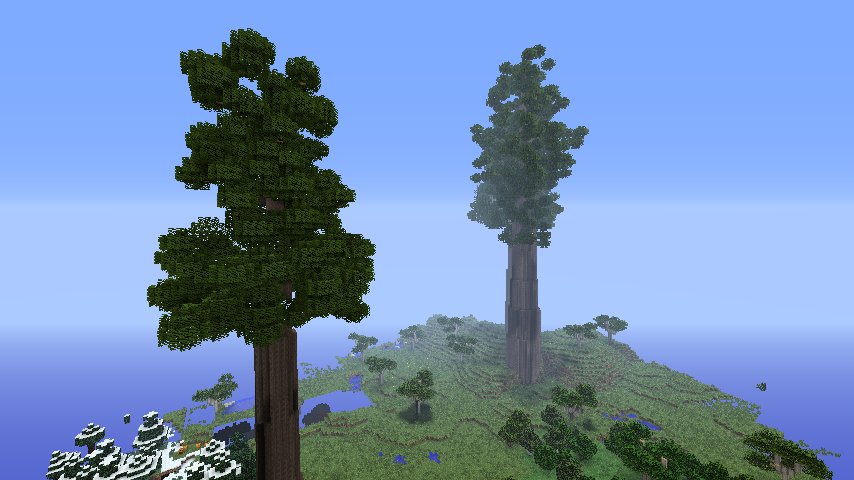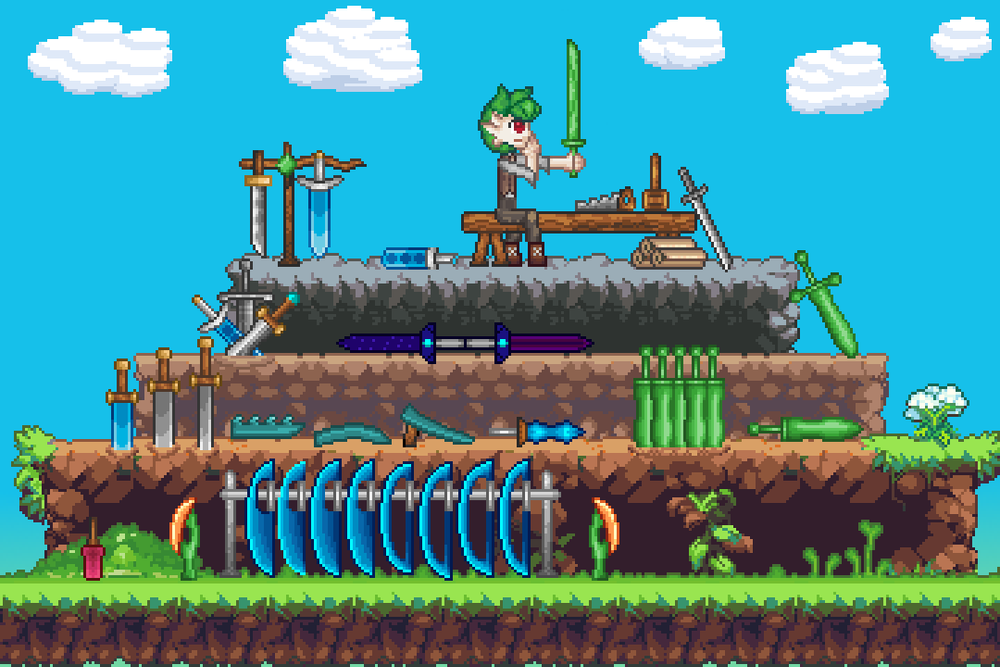
Welcome to another installment of our new interview series, "10 Questions With," where we explore the journeys and insights of the talented creators behind some of your favorite mods!
This time, we have mDiyo, an established Minecraft author and aspiring game developer. His mind-blowing project, Tinkers Construct, has brought joy to millions of players, with other great creations like Tinkers' Mechworks and Natura helping us all create an adventure on another level.
In this interview, mDiyo helps us understand the inner workings of a mod author and shares his next destination. Thank you for talking with us mDiyo!

You’ve been part of the Minecraft modding scene for a long time. What first inspired you to dive into mod development, and how did that lead to the creation of something as iconic as Tinkers’ Construct?
The first and most important reason I started to make mods is because my life was in a place that was literally going nowhere. This was back during the 2008 housing crisis when I had just gotten out into the world and was applying for jobs every day. Sometimes 8-10 hours at a time.
One day I gave up. I had enough. I opened up this neat block game, just took a look inside at the “Minecraft Coder’s Pack,” realized that I was looking at a real programming language called Java, and threw myself into it.
I didn’t care about anything else. I needed something in my life that was worthwhile, and I poured every part of what I had into it for years teaching myself design, art, code, logic, and putting together a complete project.
Over time I got better at creating mods. I started to take an approach that meant something to me personally. What kind of mod did I want to make? Why would I make it? How would that look, and why wouldn’t I just share it with everyone?
My design philosophies were simple. There were two. The first was that I “owned” the game. I was tasked with making an expansion that everyone could play with and that would work with the underlying game that existed. It needed to be “Minecraft,” not a mod or an experience. The other was… “I like this game, some part of it grinds my gears in a bad way, and I want to fix it.” Things just kind of ended up here. I wouldn’t change anything.
Back in the early days of modding, Minecraft’s limitations inspired some truly creative solutions. How did the constraints of early Minecraft versions influence the direction of Tinkers’ Construct and the way you approached mod design?
The earliest versions of Minecraft had a total of 256 block IDs that all mods could use. That meant you could only really have one or two mods, and those mods had to do something. However, there were 32,000 item IDs available for use. That meant I could use a few hundred to do what I needed. I actually used more than that.
The precursor to Tinkers’ Construct was a mod named InfiTools. It had the same type of combination system for items but not the modifiers or enchantment replacements. You can just imagine that 25 materials for each head and handle take over 600 IDs for those items, and I made about 20 tools. Thousands, thousands of empty item IDs that I just took because they were available.

Long hours of coding and testing can take a toll on anyone. Did you ever face any physical challenges or well-being issues during development? How did you adapt your workflow or routine to ensure you could keep creating, and what advice might you have for others facing similar hurdles?
I’ve got some strange and inconsistent health problems. They make it hard to sleep on a regular schedule, and some sounds really bother me. Staring at a computer for long periods exacerbates these issues in ways that are better for a physical health perspective but worse for social, mental, and spiritual health.
I was literally programming late into the night when the sun came up one week, and late into the day when the sun went down the next. I didn’t have anything else going on in my life at the time, and things have improved considerably since then, but it was more like the workflow adapted to my sleep schedule than the other way around.
Tinkers’ Construct has gone through several versions, each bringing something fresh and rethinking core features. How do you balance preserving the classic “feel” of Tinkers’ Construct with evolving gameplay and player expectations over the years?
The first version of Tinkers’ Construct, and perhaps the 0th version called InfiTools, both came from a place of learning. I wanted to build something that was worthwhile, and others could play with. I learned just as much as other people about how this mod was meant to be and what it meant to the game. The second version was made entirely by a programmer named Boni. I was absent, as the 1.8+ transition was not something I wanted to deal with. I’m a designer now, so on the third version there was a lot of time spent on making sure that the mod felt like something that belonged in the newer development path of Minecraft. We wanted it to feel like you were experiencing something new and well thought out, no matter which path you took. Base builders, wanderers, speedrunners, and general users were the four categories of players that were considered in each of the tiers that the design held.
Originally, you worked largely solo, and over time, more collaborators joined in. How has working with a team influenced the mod’s direction and evolution, and what lessons have you learned about collaboration in a creative project like this?
The biggest influence is that each version of the mod has its own primary developer. Tinkers’ Construct 3 has KnightMiner doing the bulk of the work. The bedrock versions each have their own developer, and I encourage anyone who wants to create mods or games to pick up the torch themselves. The more people who have input in the mod while the leaders keep their vision intact, the better the mod gets. I really like that.
You’ve hinted at exploring game development beyond Tinkers’ Construct, including your own projects. Could you share a bit about the ideas you’re experimenting with outside the Minecraft ecosystem and how your modding experience is guiding you on those journeys?
There’s a game that I’m working on called Tiny Tinkers. It’s at least two years out, maybe more, but it takes the modularity idea and applies it to literally everything. That game isn’t like any I’ve played, and I definitely wouldn’t have been able to come up with it without modding in the first place.
There was this wonderful feedback loop of putting something out, getting thoughts, bringing those back into the design, and then putting out something else... it’s so nice to see people playing with the mod and doing great things with it.
Characters are like dolls with replaceable arms and legs built out of items, they can wear clothes and equipment that can be modified, they have tools that resemble the Tinkers’ Construct mod quite a bit… even the level design is chunked into Blocks that have tiles in them, and it’s a lot of fun to see the underlying structures permeate the code and design.
The Minecraft community has embraced Tinkers’ Construct, offering feedback, suggestions, and even fan content. What’s a moment of community interaction that really stood out to you, and how does player enthusiasm shape your approach to creating and updating mods?
The best one I can think of isn’t a moment exactly - the first version of Tinkers’ Construct has a Minecraft Forum post that I responded to regularly. There was this wonderful feedback loop of putting something out, getting thoughts, bringing those back into the design, and then putting out something else. Nowadays, Discord serves the same function. It’s a bit faster and less thought out, but it’s so nice to see people playing with the mod and doing great things with it.
Minecraft itself has evolved significantly—new versions, new blocks, new rules. How do you see the future of modding, especially for long-established mods like Tinkers’ Construct, as Minecraft marches forward with updates and new features?
Oh, that’s a really hard question. I think I might want to give some context on that. Minecraft has four “eras” of modding that seem to group up mods into complete experiences. Any time one of these updates happens, mods break so horribly they need to be completely rewritten. Each one of these coincides with a version of Tinkers’ Construct or its precursor.
The first one was beta to release 1.2, the jungle update. Larger world sizes were the last nice thing before the client/server merge. I’d say that after this version was where the real 1.0 should have happened.
The second one lasted from 1.4 to 1.7. That’s where most of the old mods were established and grew into the complete projects they were. 1.8 and later saw significant changes to the underlying codebase, and a number of people just stopped modding entirely because of how many things were broken. This is where I left off, and 1.12 is where “Old Minecraft” ends. The fourth set of mods and the third direction that Minecraft is moving in for development started with 1.13, Update Aquatic, and continues to this day. The mods that are developed now are significantly different than they were before. The world isn’t an empty canvas, it has things to work with. Lore to lean on. Various new blocks and structures infer things about the way the world was shaped rather than being a generic sandbox of blocks you stack together.
Minecraft supports a huge amount of things that can be done under the hood, and if you want to crack it open and start programming you have unlimited access to the greatest game in the entire world.
I think, given that context, that mods are going to be more focused on story or experience in their creation. People aren’t going to be ripping apart the world to build a nuclear factory on top of it unless they want to do something like a total conversion. That’s what used to separate “tech” mods from “magic” mods and “other” mods, as all of those categories feel like different things. They all seemed to fit into the game in old versions, but not anymore.
For gamers and aspiring modders watching today, what advice would you give on starting a new mod project, finding inspiration, or pushing through creative and technical hurdles?
For everyone who wants to get into modding, I want you to think about what a modification actually is. Anything that Minecraft calls a “pack,” like a texturepack or a datapack is technically a mod. They can be as small as changing the flower into a rock or as large as building an entire game using Minecraft as an engine. The game itself supports a huge amount of things that can be done under the hood, and if you want to crack it open and start programming you have unlimited access to the greatest game in the entire world.
Minecraft is a game that proves that no matter how good something is, it can always do something different. Each version of the game has its own mods with its own creations, and even though that feels somewhat fragmented today, you can always try your hand at making things better.

Can you give us a glimpse into what might be coming next from you? Whether it’s updates to Tinkers’ Construct, new mods, or entirely different projects, what should fans keep an eye out for?
First, the organization that I left Tinkers’ Construct in the hands of is here: https://slimeknights.github.io/
Second, I have a website: https://www.mdiyo.com/
Third, as mentioned above, I’m building a game called Tiny Tinkers. It’s at least a couple years out, and I may build some smaller games in the meantime. There’s a whole process of building an underlying platform to build multiple games, and they should all have some kind of unique aspect to them while working on a common core. Some games are just simpler than others, and the content from those smaller games can be ripped wholesale into the larger ones.
I like to write, I like to design, and I like to make things in general, so there may be a lot of content that gets made that doesn’t make it into any games.